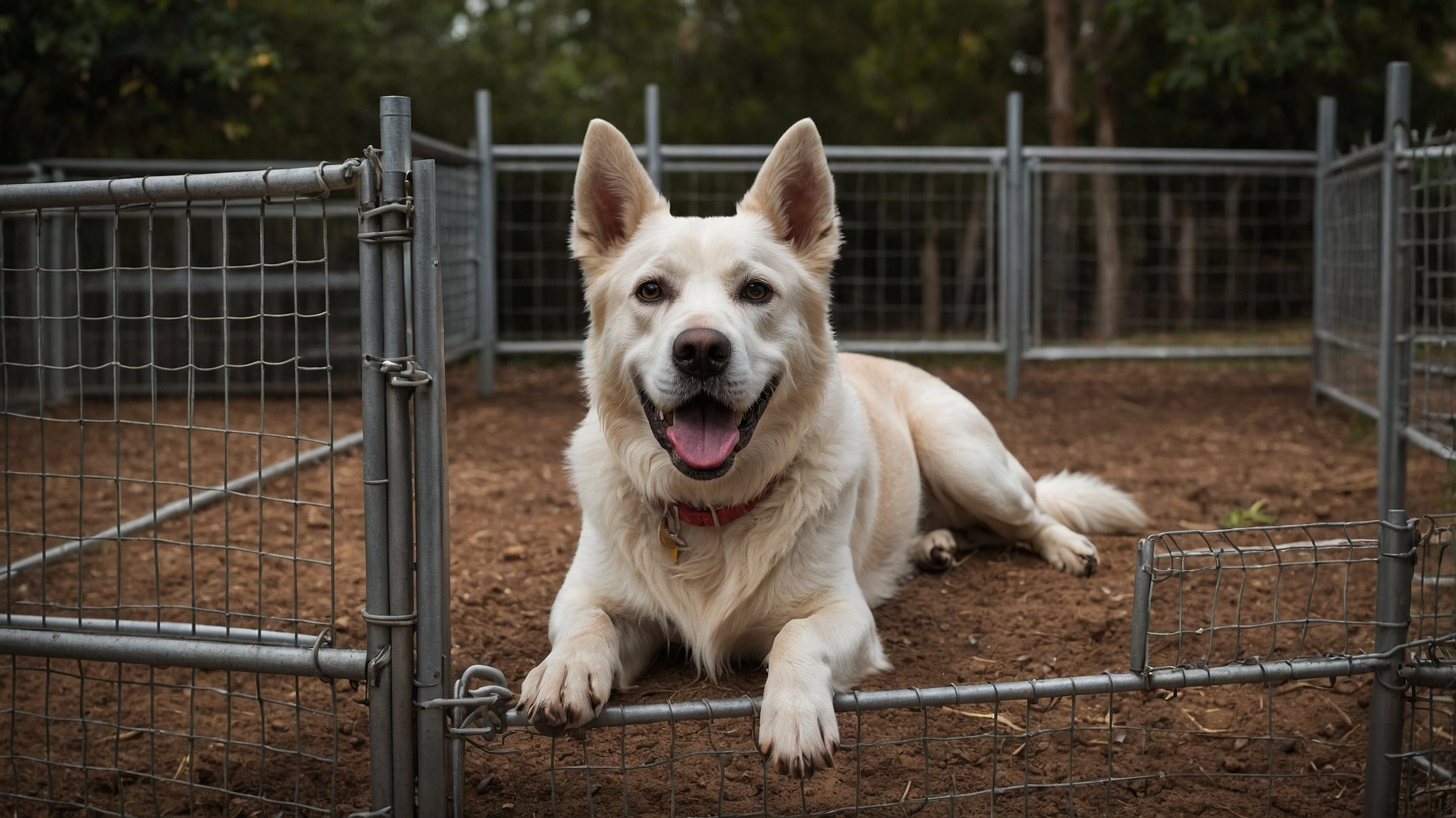Did you know that dog enclosures can offer a practical and safe solution for your pet? Whether at home or in the garden, these enclosures allow your dog to explore freely while keeping them protected.
With various materials and sizes available, choosing the ideal enclosure can vary depending on your pet’s size and behavior. If you have questions about the topic and want to acquire the perfect enclosure for your four-legged friend, we are here to help.
Keep reading to learn all the details about pet enclosures and check out excellent tips that will assist you in choosing the best option that ensures the protection and freedom your dog deserves!
Table of contents
- What are Dog Enclosures and Why Should you Consider Them?
- Indoor dog enclosures: A practical option
- Outdoor dog enclosures: Safety and freedom
- Puppy Dog Enclosures: Safety and Comfort From an Early Age
- How to Choose the Best Enclosure for Your Dog
- Care and Maintenance of Canine Enclosures
- Alternatives to Enclosures: What is the Best Option for Your Dog?
- The Best Materials for Dog Enclosures: Pros and Cons
- Final Considerations for Choosing the Ideal Enclosure for Your Dog
What are Dog Enclosures and Why Should you Consider Them?
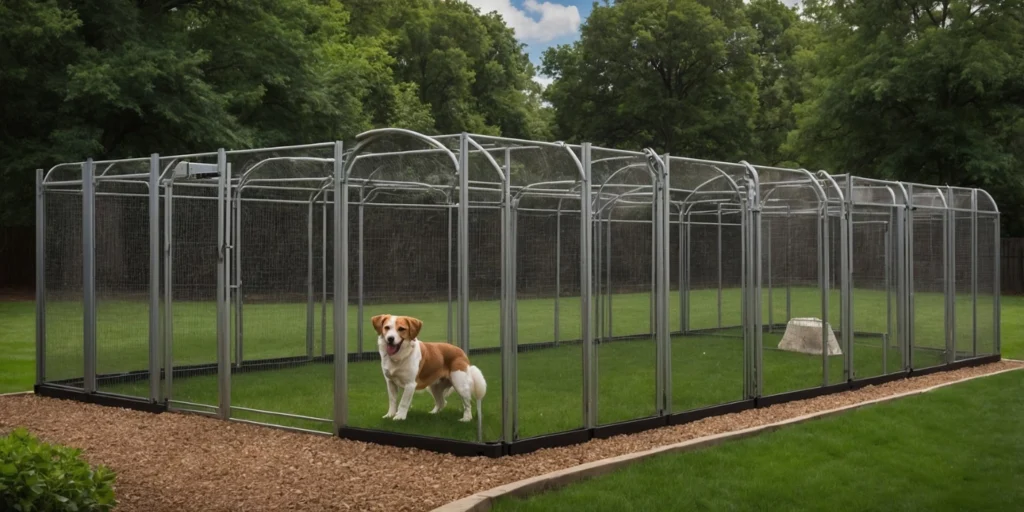
Dog enclosures are structures designed to delineate specific areas for controlled movement of the dog. They are very popular and can be used in both indoor and outdoor settings.
Commonly used to train puppies or prevent dogs from accessing dangerous areas, they are an excellent tool to include in your routine as they directly contribute to the protection of pets.
In addition to safety, enclosures assist in training and adapting the dog, and are useful for owners who need to control the pet’s space temporarily.
Whether to facilitate the training of a new puppy or to ensure the dog stays in a safe place while the house is being organized, they are a practical solution.
Indoor dog enclosures: A practical option
Indoor dog enclosures are a practical and efficient solution to keep your pet safe inside the house. They provide a controlled space for the dog to move around without the risk of accessing dangerous areas such as kitchens or stairs.
This option is especially useful for those living in apartments or smaller homes where defining spaces can be challenging. Besides ensuring safety, indoor enclosures provide comfort for the dog, as they can stay close to the family but with limited freedom.
Compared to other alternatives like transport crates, enclosures offer more space for the dog to move around, making them ideal for extended periods of use. The practical design, usually made of lightweight materials such as plastic or wood, facilitates movement and assembly, making it a versatile option for various situations.
Outdoor dog enclosures: Safety and freedom
In outdoor spaces, dog enclosures provide the dog with the opportunity to run and play safely. They are ideal for yards and gardens, where the dog can enjoy freedom without the risk of escaping or getting hurt.
Outdoor dog enclosures are generally made from more durable materials such as steel or reinforced plastic, designed to withstand adverse weather conditions. This ensures durability and safety, even with direct exposure to the sun or rain.
When choosing an outdoor enclosure, it’s important to ensure that the size is appropriate for the dog’s size and energy level. For larger or highly active dogs, a spacious and sturdy enclosure is essential, while smaller dogs may adapt to smaller and simpler enclosures.
Puppy Dog Enclosures: Safety and Comfort From an Early Age
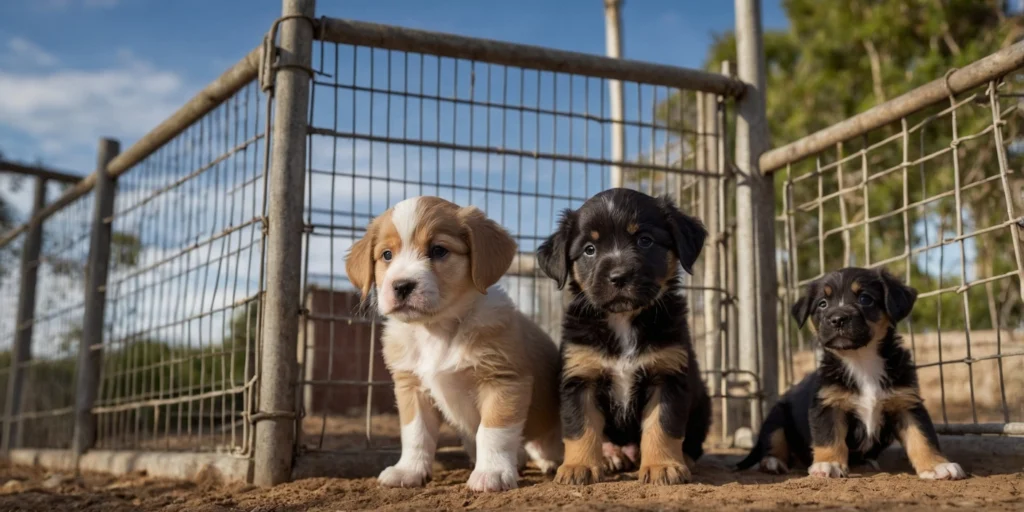
Puppies, due to their curiosity and energy, can greatly benefit from using enclosures. During the first few months of life, when they are learning about their surroundings, the enclosure can provide a controlled and safe space for them to explore.
Training and adaptation
Dog enclosures help in training puppies by creating boundaries that make it easier for them to learn rules, such as the correct place to relieve themselves. Additionally, they prevent household accidents, such as chewing on wires or accessing dangerous products.
Preventing damage to the house
Besides protecting the dog, the enclosure helps protect the house. During the teething phase, puppies tend to chew on furniture, shoes, and other items. The enclosure keeps these items out of reach, preserving both the house and the pet’s safety.
How to Choose the Best Enclosure for Your Dog
We know that choosing from many dog enclosures options can be challenging, so we’ve highlighted some important tips to help you with this task:
Evaluation of the dog’s size and behavior
Choosing a dog enclosure should consider the pet’s size and behavior. Small dogs may be satisfied with smaller and lighter enclosures, while large and energetic dogs need robust and tall enclosures to prevent escapes or accidents.
Materials and mobility
The choice of material is crucial. Metal enclosures are extremely durable and ideal for dogs that have the strength to topple lightweight structures. Plastic enclosures are more suitable for indoor environments and smaller dogs due to their ease of transport and assembly.
Ease of assembly and transport
If you plan to use the enclosure in different locations, make sure it is easy to assemble and disassemble. Foldable models are great for those who need mobility and versatility.
Care and Maintenance of Canine Enclosures
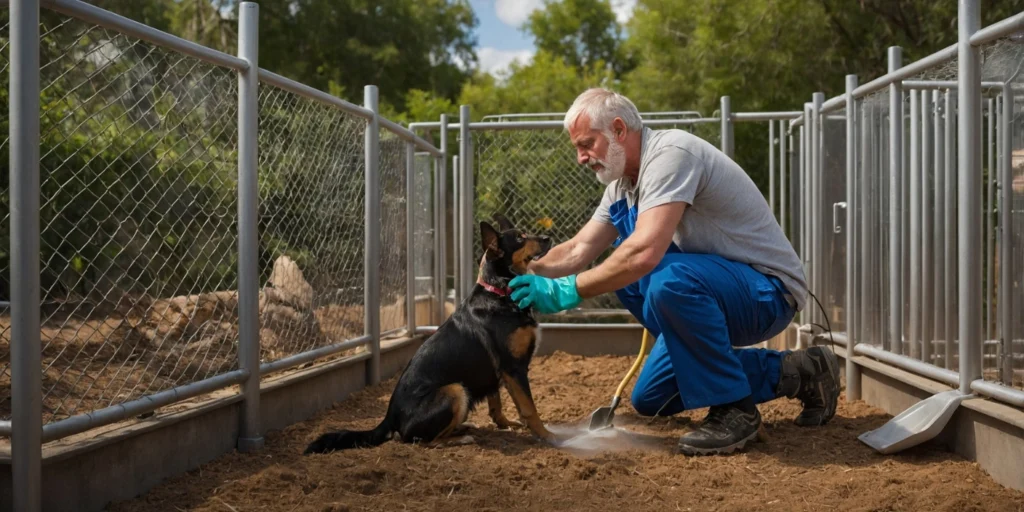
Regular cleaning
Keeping the enclosure clean is crucial for your pet’s health. In outdoor pet enclosures for dogs, dirt can accumulate quickly, and lack of maintenance can lead to infections or other health issues. Regular cleaning with appropriate products is important to extend the life of the enclosure and keep the dog healthy.
Inspection of damage
Regularly check the enclosure’s structure to ensure there are no damaged or worn parts. For metal enclosures, inspect for rust or loose screws that could harm the dog.
Safe placement
In addition to maintaining the enclosure itself, the location where it is installed must also be safe. Check that the ground is level and that the enclosure is securely fixed, avoiding tipping over or the possibility of the dog moving the structure.
Alternatives to Enclosures: What is the Best Option for Your Dog?
Although dog enclosures are a popular option, there are other alternatives to define your pet’s space:
Safety Gates
Safety gates are ideal for those who want to limit the dog’s access to certain rooms without completely restricting their movement. They are easy to install and can be adjusted to different door openings.
Transport crates
Transport crates are mainly recommended for travel or short periods when the dog needs to stay in a controlled space. They are safe and comfortable but should not be used for long periods.
Kennels
For those with outdoor space, a kennel is a more permanent option. It provides a safe and spacious area for the dog, with greater resistance and durability than a portable enclosure.
The Best Materials for Dog Enclosures: Pros and Cons
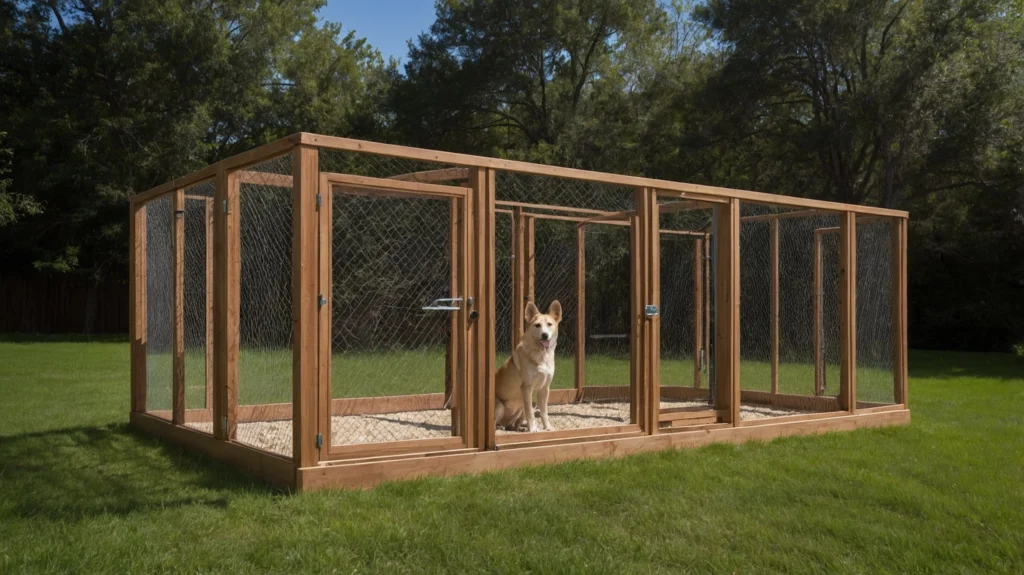
Metal enclosures
Dog enclosures made of metal are extremely durable and resistant, suitable for large or highly active dogs. However, they are heavier and may not be ideal for frequent transport. They can also rust over time, requiring regular maintenance.
Plastic enclosures
Plastic enclosures are lightweight, easy to handle, and ideal for indoor use. Although less durable than metal ones, they are more practical for those seeking something temporary or easy to assemble.
Wooden enclosures
Aesthetically pleasing, wooden enclosures can match the decor of the home but require more care, especially in outdoor environments where they may suffer damage due to weather exposure.
Final Considerations for Choosing the Ideal Enclosure for Your Dog
Choosing the ideal enclosure for your dog is an important decision that can directly impact your pet’s safety and well-being. From indoor options to delineate spaces within the house to dog enclosures outdoor that offer greater freedom, it is crucial to consider the dog’s size, behavior, and specific needs when making your choice.
Dog enclosures offer a practical and effective solution for training, protecting, and providing comfort to the pet. When choosing a model, remember to evaluate the material, ease of assembly, and durability to ensure it meets your and your pet’s expectations.
Additionally, keep up with regular maintenance to ensure the enclosure remains in excellent condition, contributing to your four-legged friend’s health and safety.
No matter which enclosure you choose, remember that the primary goal is to provide a safe and comfortable environment for your dog. With the right information and a bit of planning, you can find the perfect solution that balances safety, practicality, and comfort for your faithful companion.

